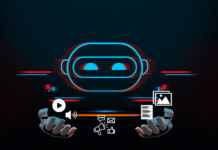Google’s D-Wave 2X Quantum Computer is 100 million times faster than a regular computer
Google says its D-Wave 2X Quantum Computer is more than 100 million times faster than a regular computer chip. A team of researchers from Google’s AI labs has published results which claims that its controversial D-Wave 2X Quantum Computer really works.
Quantum Computers rely on fundamentally different principles to today’s regular computer, which works with subatomic particles known as quantum bits, or qubits – each of which can be zero or one or both. So while three conventional bits can represent any of eight values, three qubits can represent all eight values at once. That means calculations can theoretically be performed at much higher speeds. The D-Wave 2X Quantum Computer runs on 1,097 qubits.

The D-Wave machine is installed at NASA’s Ames Research Center in California and operates on data using a superconducting chip called a quantum annealer. The quantum annealer uses an algorithm designed to solve optimisation problems, which are common in machine-learning and artificial-intelligence software.
[su_quote cite=”Google director of engineering Hartmut Neven”]We found that for problem instances involving nearly 1,000 binary variables, quantum annealing significantly outperforms its classical counterpart, simulated annealing. It is more than 10 to the power of 8 times faster than simulated annealing running on a single core. We also compared the quantum hardware to another algorithm called Quantum Monte Carlo. This is a method designed to emulate the behavior of quantum systems, but it runs on conventional processors. While the scaling with size between these two methods is comparable, they are again separated by a large factor sometimes as high as 10 to the power of 8.[/su_quote]
Google has also published a paper on the findings of its study on quantum tunnelling.
Google and NASA compared the D-Wave X2’s quantum annealing against to another algorithm called Quantum Monte Carlo. This is a method designed to emulate the behavior of quantum systems, but it runs on conventional processors. Again, a speed of up to 10 to the power of 8 was seen sometime.

“While these results are intriguing and very encouraging, there is more work ahead to turn quantum enhanced optimization into a practical technology.” Hartmut Neven, the head of Google’s Quantum Artificial Intelligence lab.
“It is a truly disruptive technology that could change how we do everything,” said Deepak Biswas, director of exploration technology at NASA’s Ames Research Centre in California.
The machine was bought by Google and NASA in 2013 from Canadian startup D-Wave systems, which is marketed as “the world’s first commercial quantum computer.”
“For a specific, carefully crafted proof-of-concept problem we achieve a 100-million-fold speed-up,” said Hartmut Neven, leader of Google’s Quantum AI Lab in Los Angeles.
















































